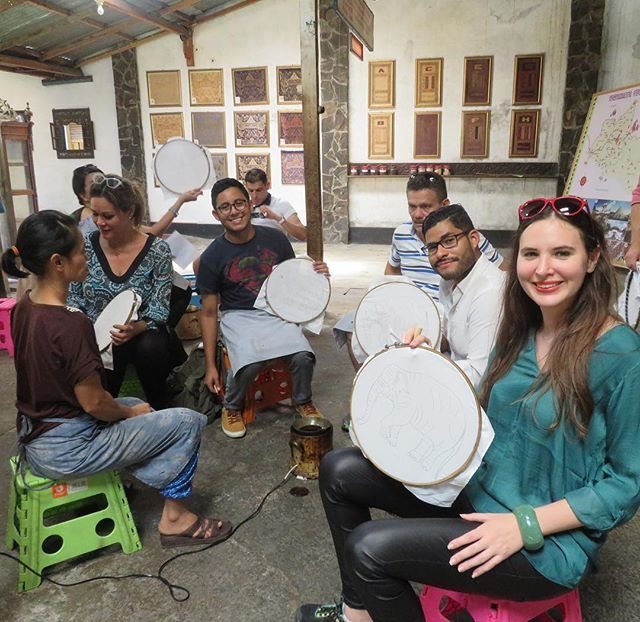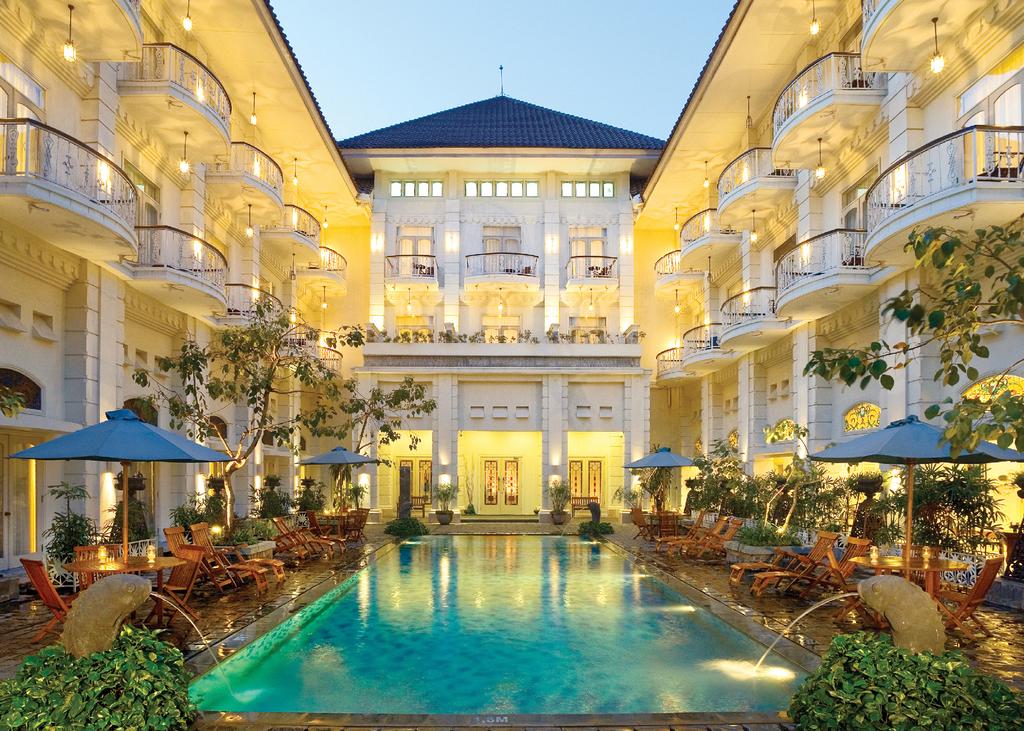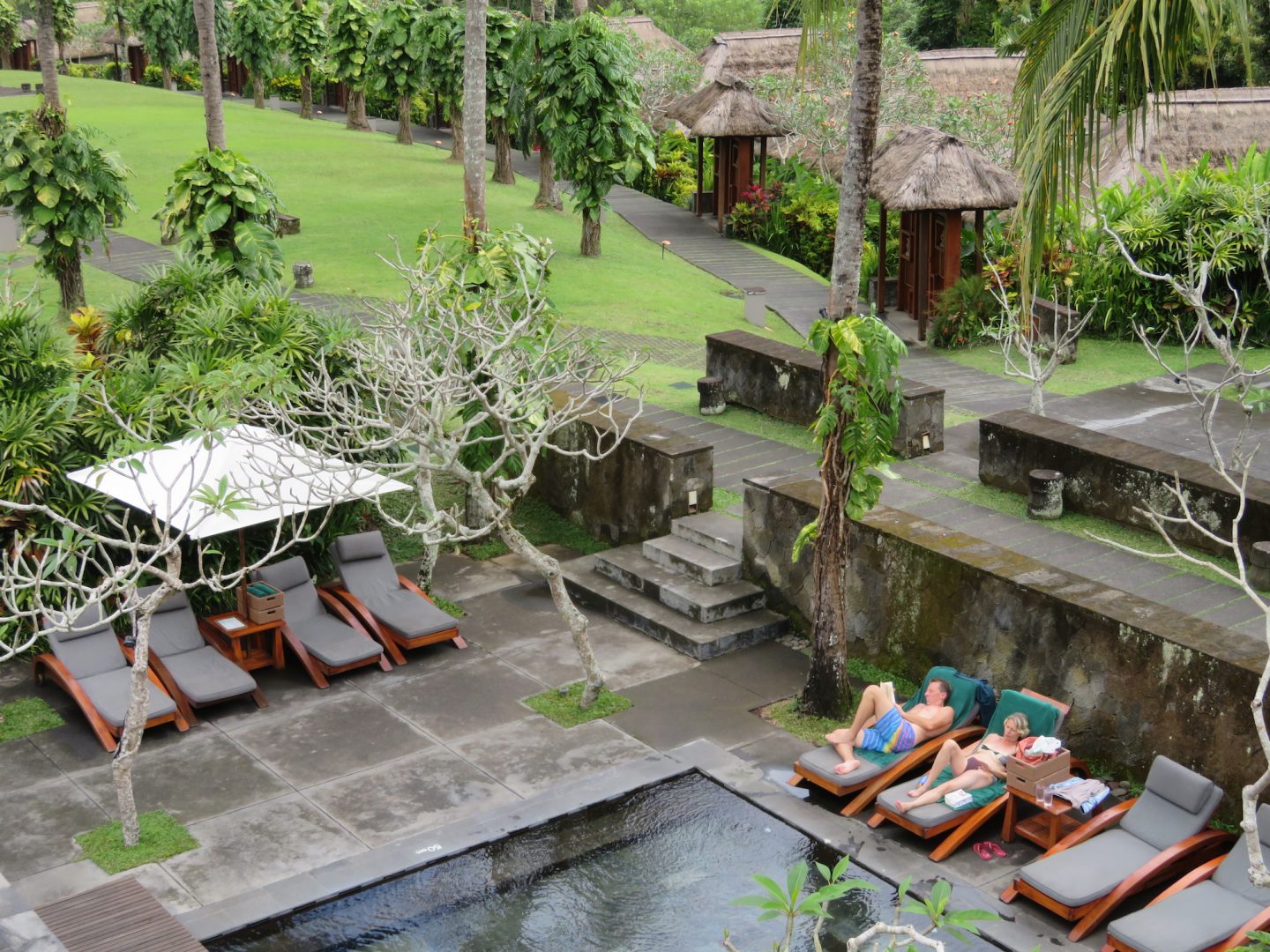If you visit Indonesia, especially the island of Java, you will see that people are dressed in fabrics that have particular designs. Very soon you will realize that they love these fabrics called batik.
Batik is a word of Javanese origin that means “to write” and “drops.” In 1880 it was registered for the first time in English at the Encyclopædia Britannica.
The history of Batik technique
It is not very clear how or where the batik story began. Dyeing cloth using wax is an ancient art form. In the fourth century BC, the Egyptians used it to cover their mummies with cloth dipped in wax. In China, India and Japan this technique was used since the seventh century after Christ. It was also done in Nigeria and Senegal but using cassava starch, rice paste, or mud as resistant instead of beeswax.
On the island of Java in Indonesia, the Batik technique was most developed. All the necessary materials were available on the island, including cotton, beeswax and the plants needed to make vegetable dyes. Some believe that the technique was introduced from India or Sri Lanka. Others believe it is a native tradition, as some sites that were not influenced by Hinduism have been doing batik for centuries.
It is estimated that canting was invented in East Java in the 12th century. This tool looks like a pen and is made of copper. It has a container to put the wax that passes through a narrow tube to be applied on the fabric. Carved statues have been found that have clothes with floral patterns of round margins dating to the 13th century.

Chinese and Dutch conquerors introduced new patterns between 1800 and 1900s. They also invented block copper seals to produce batiks en masse.

How to make a batik?
In our fam trip to Indonesia they took us to Raradjonggrang Batik Factory to learn how to make a batik. There are two ways to do batik, using canting and using copper seals. Batiks made with the copper seal are easier to make, since it allows you to cover a lot of fabric efficiently. These batiks are cheaper.
They taught us how to do batik in a traditional way using canting. They divided us into circles to sit on small benches that looked like they were for children. Each received a cloth mounted on a circular frame. The fabric was already drawn by the ladies who work there. They must make the design on both sides.

I had an elephant to trace. We were each given a canting and a bowl of hot wax for the group. You had to fill the canting with wax without putting too much because then too much comes out and you will not be allow to follow the shape of the design. Another challenge was not to burn yourself while placing the wax in the container.
The wax has to be at the right temperature so that the fabric can be penetrated and reach the other side. When we finished the lady reviewed each design and placed wax if it had not reached the other side. I think I did a good job, but it was not as easy as I thought since I was dripping a little more wax than I would have liked.

They passed us to the store where they sell the batiks while the batik school dyed and dried our creations. I was surprised to see the price of some batiks. Shirts made with canting could cost about $300 and more depending on the design. If you are in Yogyakarta you can stop by Malioboro Street and buy batik clothing.

Batik as part of Indonesian culture
In 2009, UNESCO designated Batik as Intangible Cultural Heritage of Humanity. As part of the recognition, UNESCO insisted that Indonesia preserve its heritage and designated October 2 as National Batik Day.
Historically, the batik was used in ceremonies and as part of the kebaya suit. After the independence of Indonesia, the use of batik dropped, but recently returned with more popularity. This was due to fashion designers who innovated with new colors, fabrics and patterns. You can get shirts, suits or scarves made with batik prints.
The traditional skirts are called sarongs and are sold with 2.25 meters long. They are tied around the waist or as a hat called “blangkon”. The servants of the Sultanate of Yogyakarta use it both ways. The designs are different depending on whether it will be sanrong or hat. The styles also vary depending on the region in which the batik was made.

There is even an airline called Batik Air!
When we arrived at the Yogyakarta airport we were surprised to see a plane with large letters that said “Batik Air”. The logo of the airline is red and on one side it has a yellow canting.
Batik Air was founded in 2013 and flies to 26 destinations. It is part of Lion Air, which is the second largest airline in Indonesia, after Garuda Indonesia. It is also the second largest low-cost in Southeast Asia after AirAsia.






